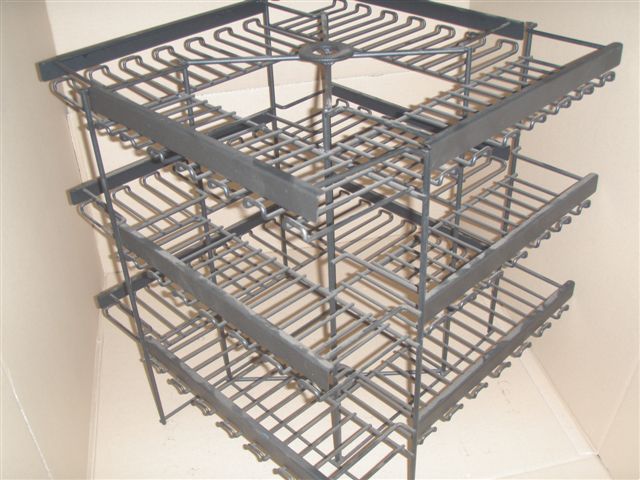
The Anesthesia Patient Safety Foundation's alarm summit in 2004 1 emphasized that the variable-pitch pulse oximeter tone and the capnography auditory alarm must be on and audible if they are to prevent patient incidents. Further studies should test these findings in other intraoperative contexts. CONCLUSIONS:Īdvanced auditory displays help the distracted anesthesiologist maintain peripheral awareness of a simulated patient's status, whereas a HMD does not significantly improve performance. Participants self-rated monitoring as easier in the HMD, Audio and Both conditions and their responding as faster in the HMD and Both conditions than in the Visual condition. For events detected, there was no difference in detection times across display conditions. Participants detected significantly more events with Audio (mean = 90%, median = 100%, P < 0.02) and Both (mean = 92%, median = 100%, P < 0.05) but not with HMD (mean = 75%, median = 67%, ns) compared with the Visual condition (mean = 52%, median = 50%).
#ADVANCED DISPLAYS PLUS#
Displays were presented in a counterbalanced order that varied across participants and included: (1) Visual (visual monitor with variable-tone pulse oximetry), (2) HMD (Visual plus HMD), (3) Audio (Visual plus auditory displays for respiratory rate, tidal volume, end-tidal CO 2, and noninvasive arterial blood pressure), and (4) Both (Visual plus HMD plus Audio). Participants completed four 22-min anesthesia scenarios. If participants detected an event that could eventually harm the simulated patient, they told the resident, pressed a button on the computer screen, and/or informed a nearby experimenter. While performing a reading-based distractor task, participants supervised the activities of a resident (an actor) who they were told was junior to them. Participants were 16 residents and attendings.
#ADVANCED DISPLAYS SIMULATOR#
In a full-scale anesthesia simulator study we examined the relative effectiveness of advanced auditory displays for respiratory and blood pressure monitoring and of head-mounted displays (HMDs) as supplements to standard intraoperative monitoring. Reprints will not be available from the author.Īddress correspondence to Penelope Sanderson, ARC Key Centre for Human Factors The University of Queensland, St Lucia, QLD 4072, Australia. The blood pressure earcons are the subject of PCT/AU2003/001622 (inventor Watson). The respiratory sonification used in this study is the subject of US Patent 7070570 (inventors Sanderson and Watson). Liu.ĭepartment and Institution to which the work should be attributed School of ITEE, School of Psychology, and School of Medicine, The University of Queensland.

Russell, and by University of Adelaide to D. Supported by Australian Research Council Discovery Project grant ARC DP0559504 to P. This article has supplementary material on the Web site: Accepted for publication February 20, 2008. Lucia, Queensland †School of Medicine, The University of Queensland, St Lucia, Queensland, Australia ‡Department of Anaesthesia, Pain Medicine and Hyperbaric Medicine, Royal Adelaide Hospital, South Australia, and University of Adelaide §Royal Adelaide Hospital and University of Adelaide, Adelaide, Australia ∥School of Information Technology and Electrical Engineering, The University of Queensland, St Lucia, Queensland, Australia ♭epartment of Anaesthesia, Princess Alexandra Hospital, Brisbane, Australia and The University of Queensland #Royal Adelaide Hospital, Adelaide, Australia **Cognitive Engineering Research Group, The University of Queensland, St Lucia, Australia and ††School of Psychology, The University of Queensland, St Lucia, Australia. It does not store any personal data.From the *ARC Key Centre for Human Factors and School of Medicine, The University of Queensland, St. The cookie is set by the GDPR Cookie Consent plugin and is used to store whether or not user has consented to the use of cookies. The cookie is used to store the user consent for the cookies in the category "Performance". This cookie is set by GDPR Cookie Consent plugin. The cookies is used to store the user consent for the cookies in the category "Necessary".

The cookie is used to store the user consent for the cookies in the category "Other.

The cookie is set by GDPR cookie consent to record the user consent for the cookies in the category "Functional".

The cookie is used to store the user consent for the cookies in the category "Analytics". These cookies ensure basic functionalities and security features of the website, anonymously. Necessary cookies are absolutely essential for the website to function properly.


 0 kommentar(er)
0 kommentar(er)
